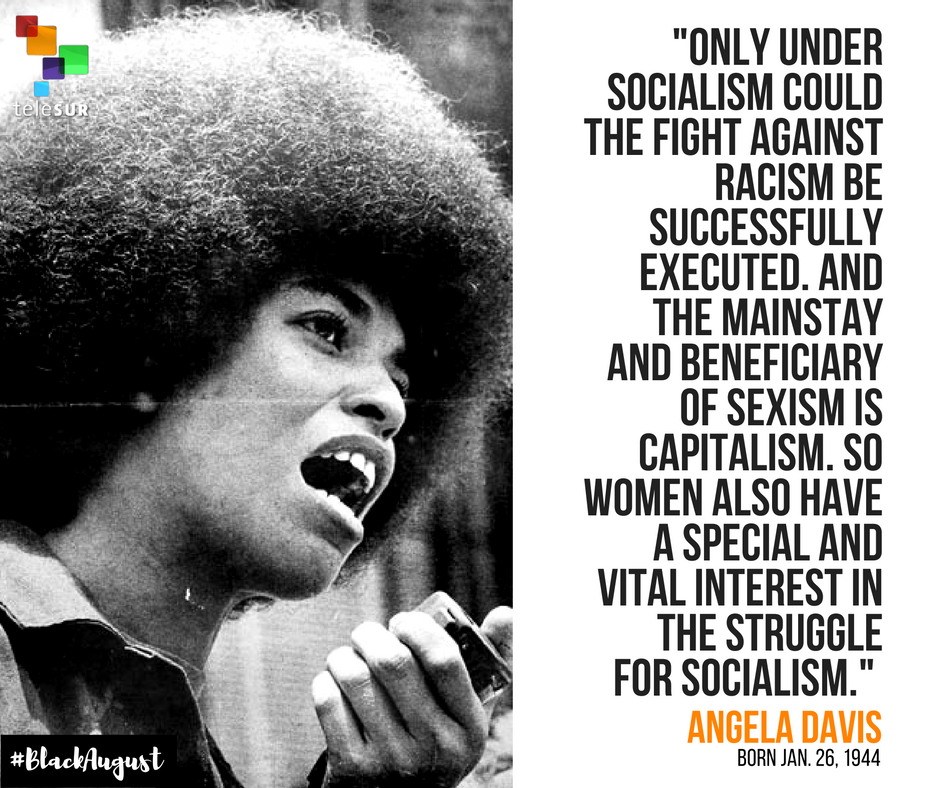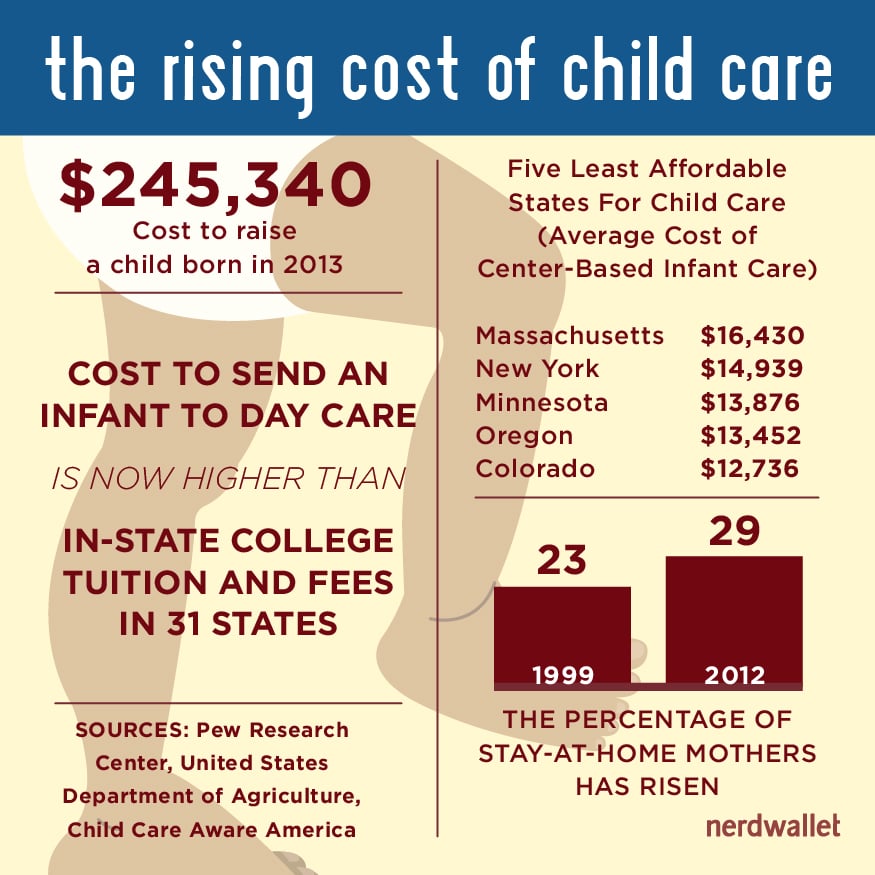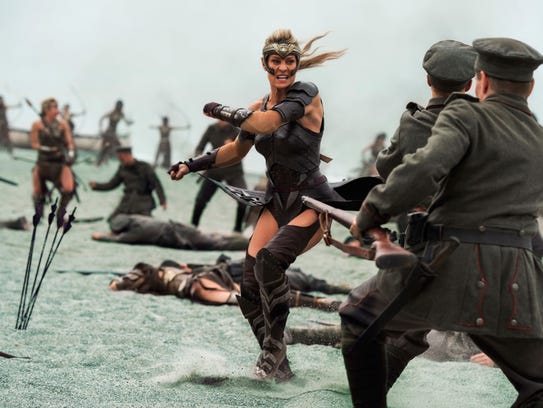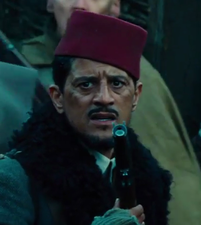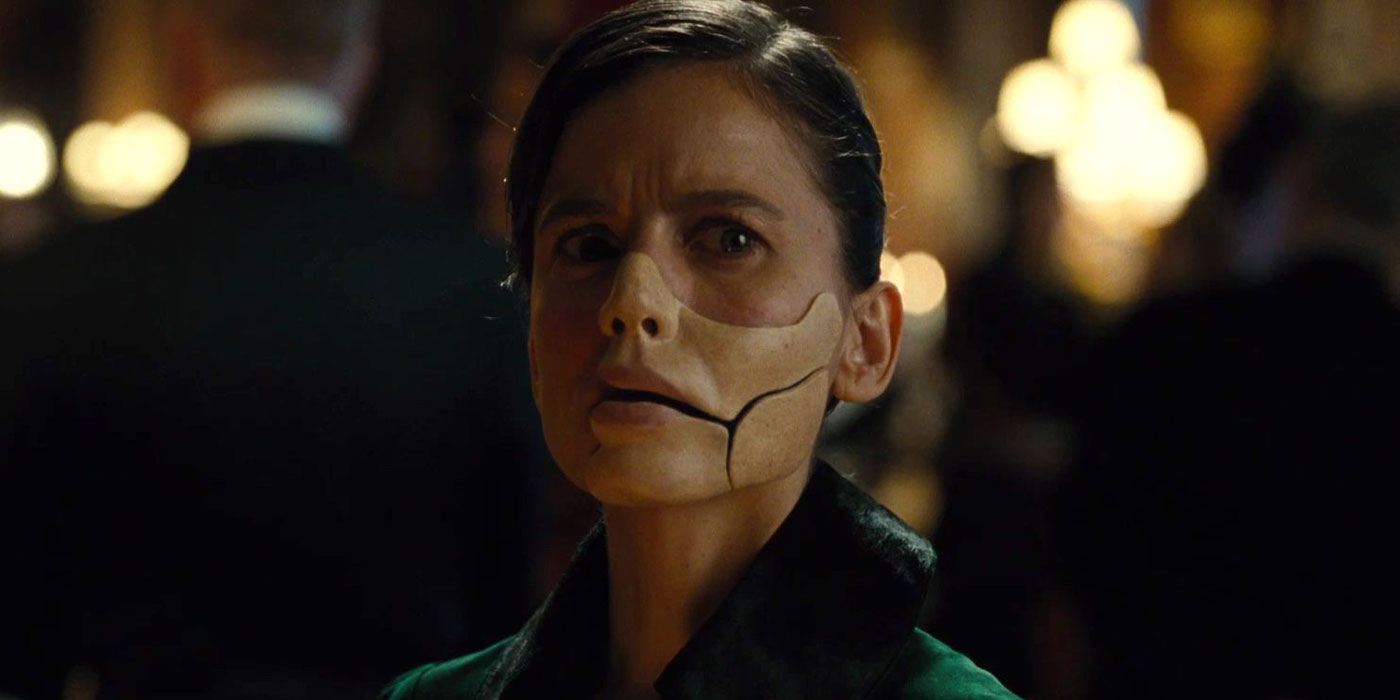Feminist T-Shirts: Severing the Thread between Capitalism and Feminism
H. Bradford
7/5/17
I’m not going to lie. I like to wear things that advertise my politics. It’s terrible. It’s hypocritical. But, it is also a way to tell the world that I am weary of the status quo and sometimes it’s a way start a conversation. It is also an expression of self (which itself should not be idealized) and a message to others like me that they are not alone. Recently, when I saw a really cool feminist t-shirt at a store at the mall, I really wanted to buy it. I didn’t. Still, I am not a saint and my wardrobe is made from the blood and sweat of exploited workers. Thus, this piece of writing is not a call for people to be perfect. Certainly, I have a lot of room to grow. Instead, it is a call to analyze a disturbing trend in feminism with the hope that this knowledge can shape our organizational tools and demands. The trend this piece examines is the rise of the feminist t-shirt and the accompanying ideology of corporate feminism. To this end, this topic is July’s educational component of the Feminist Justice League’s “feminist frolic.” Many topics have been discussed over the past year and it seems appropriate to explore how feminism has been appropriated by capitalism, while doing some small act to combat this trend: making our own t-shirts.
This year has seen an increase of feminist activism. Locally, there has been an explosion of feminist events to partake in. Nationally, between three and five million people in the United States participated in the Women’s March, making it the largest single protest in American history. More people participated in the Women’s March than are members of the U.S. military. This burst of feminist activism is certainly a welcome development. Feminism is cool right now. As a result of the rise in popularity of feminism there has been an increased demand for feminist t-shirts. T-shirt with slogans such as “Feminist AF”, “The Future is Female”, and “Nevertheless, She Persisted” are a few examples of popular mantras this year (Spinks, 2017). While it is great that feminists proudly wear their politics on their sleeve or chest, the trend is problematic in that it may ignore the working conditions behind the production of these shirts and reduce feminism to a profit making fashion statement. For instance, in 2014 women at a sweatshop in Mauritius were paid 80 cents an hour to make t-shirts that said, “This is what a feminist looks like.” In all, they earned less than $155 a month working at a factory which produced over 40 million t-shirts a year for Urban Outfitters, Next, and Top Shop. Further, women who did not produce the quota of 50 shirts a day were subjected to discipline (Ellery, 2014). At their meager wages, it would take the workers about 72 hours to buy one of the shirts produced at the factory. The workers themselves share a cramped room with 15 other women. The women often lived in the dorms for months without seeing their families overseas. The iconic shirt was worn by celebrities and politicians, and was even featured in Elle magazine. Astonishingly, the shirt itself was used by Fawcett Society, a nonprofit that promotes the labor rights of women. When confronted by the conditions of the Mauritius factory, the non-profit argued that the garments were ethically produced (Bianco, 2014).

The case of the “This is what a feminist looks like” t-shirt is appalling, but it is far from an isolated incident. Beyonce, a self proclaimed feminist, also came under fire because the clothing in her company, Ivy Park, was produced at a sweatshop in Sri Lanka. Workers made less than 65 cents an hour and would need to work over a month to afford the leggings that they produce. Similar to the women from the factory in Mauritius, they worked 60 hours a week and stayed at a boarding house, as many came from rural areas (2016, Euroweb). Dior sold a $710 t-shirt with the slogan, “We should all be feminists.” The quote was from an essay by Chimamanda Ngozi Adichie, a Nigerian writer. Some proceeds from the shirt were donated to the Clara Lionel Foundation founded by Rihanna (Ngabirano, 2017). The investment of some proceeds of an over priced shirt to a celebrity foundation should raise some eyebrows. All of these examples illustrate how corporations have sought to profit from the popularity of feminism, but also offer insight to the troubling nature of clothing production. 
Globally, around ¾ of all garment workers are female (Spinks, 2017). The garment industry has historically been dominated by women and has traditionally been very dangerous. In the United States, one of the deadliest industrial accidents was the Triangle Shirtwaist Fire, which took the lives of 123 women and 23 men. The accident occurred on March 25, 1911 when a fire erupted in the 11 story building near the end of the workday. A fire that is believed to have originated in a scrap bin quickly consumed the building. There were no alarms in the building and the doors were locked to prevent theft. Many people jumped to their death on the streets or elevator shaft, as the tallest ladder from fire fighters only reached the seventh floor. The Triangle Shirtwaist Fire is noteworthy because it radicalized the labor movement, generated demands for more safety regulations, and was important in the founding history of International Women’s Day. Yet, little has changed since 1911. While clothing production has shifted away from industrialized countries like the United States, the working conditions are is inhumane as a century ago. The Tazreen Factory Fire of 2013 in Bangladesh illustrates this point. The massive fire killed 112 Bangladeshi workers at the Tazreen Factory which produced clothes for Walmart, Gap, and Disney, among other companies. Walmart refused to offer compensation to the survivors and families of victims. Just like the Triangle Shirtwaist Fire, the factory doors were locked. Victims had to break windows to try to escape the inferno. When a foreman told workers that there was a fire, a manager told the workers that there was no fire and they should continue working (Survivor of Bangladesh’s Tazreen Factory Fire Urges U.S. Retailers to Stop Blocking Worker Safety, 2013).

While there are many accidents each year in the garment industry, another startling example of the horrors these workers face was the Rana Plaza collapse, also in Bangladesh. On April 24, 2013, the eight story Rana Plaza in Dhaka Bangladesh collapsed, killing 1,134 workers in the largest garment industry accident in history. JCPenny, Walmart, Benneton, and other brands and stores were connected to the garments produced at the factory. Since then, North American companies signed a safety plan that they call Alliance to ensure safety standards in Bangladesh. However, the accord has been criticized as industry driven and not transparent. Companies must pay for inspections, but are not obligated to pay for upgrades related to safety concerns. Instead, Alliance signees have financed loans to suppliers for safety improvements (Kamat, 2016). This is surely a boon to brands who can make more money from loans than they can from investing their profits into safety improvement. The safety issues are not a matter of bad luck, but characteristic of capitalist production. Bangladesh is one of the cheapest places in the world to make garments. It is number two to China in garment exports and employs 5 million people in the garment industry (Kamat, 2016). The low cost of production comes at the expense of safety. Since October 2015, 3,425 factories in Bangladesh have been inspected, but only eight have passed the inspection (Tomes, 2017). 
Many feminists are mindful of the horrific conditions of the garment industry. Officially, merchandise for the Women’s March was made and printed in the United States, but there were knock offs or other organizations which made have produced garments not made in the United States. However, simply because a t-shirt was made in the United States does not mean that it was ethically made, since a t-shirt has many inputs (Spinks, 2017). At the same time, Made in the United States does not necessarily mean sweatshop free as 50% of sewing shops in the United States fit the definition of sweatshops, i.e. they break one or more federal or state labor law. 85% of sweatshop workers are women aged between 15-25 years old (Feminists Against Sweatshops, n.d). To make matters worse, even if a person purchased clothing from an ethical source, the cotton used in the clothing itself is made with extremely exploited labor. In Turkmenistan and Uzbekistan, hundreds of thousands of citizens are mobilized to pick and grow cotton under the threat of loss of land, punishment, and public humiliation. The governments of these countries maintain monopolies on cotton production, selling it at under the cost of production to remain competitive (Skrivankova, 2015). US cotton is heavily subsidized, as US cotton farmers receive a total of about $490 million dollars in subsidies. The Chinese government offers 8.2 billion dollars in subsidies to cotton farmers. The large subsidies makes it harder for poorer countries to compete, which in turn increases the level of exploitation to maintain profits. Beyond the human cost of this, there is an environmental toll. Although cotton is grown on only 2.5% of the world’s agricultural land, it uses 16% of the insecticides and 7% of the herbicides used in agriculture. It also requires huge amounts of water. In central Asia, this resulted in the destruction of the Aral Sea, once the 12 th largest lake in the world and now 10% of its original size (Organize Cotton, n.d.). In India, where cotton has been cultivated for thousands of years, 400,000 children under the age of 18 work in the cotton industry. Children are often employed in pollinating the cotton by hand to increase yields. The children are said to have nimble fingers and girls are preferable to boys, as they require less punishment to work. (Neal, 2014). Of course, these same arguments have been used to justify the exploitation of women in the garment industry.

It is difficult to know the conditions under which a t-shirt is made or all of the inputs that went into the t-shirt because we are alienated from labor. That is, in Marxist terms we are not in control of how things are produced. A t-shirt might have labels that offer clues to the working conditions, but because we are estranged from production, we never see the entire process. This makes it easy to mindlessly consume. It also makes it challenging to ethically consume goods. At the same time, consumers are individuals who exist in a social world. Focusing on consumption atomizes social problems to a matter of consumer choices. Thus, while it is important for feminists to consider where and how a shirt is made, it is also important to consider the dynamics in the world which produce exploitative labor conditions in the first place. This is where the situation becomes far more complicated.
To begin to unravel this, let’s first examine the role of women in the labor force. The vast majority of garment workers are women. This is the case in 2017 as much as it was in 1917. The relationship between women and labor is complex. On one hand, women’s access to waged labor is a basic demand for gender equality. Women’s entrance into the labor market has allowed women to support themselves without male support. This was a historical gain for women, as it allowed women to access such things as divorce, their own housing, their own careers, etc. That is, wage labor has allowed women to be something more than just the property or dependents of men. However, it has also subjected women to harsh working conditions, sexual harassment, and lower wages than their male counterparts. Women can participate in society, but they are still not equal and still dependent upon men. Work alone did not liberate women, it simply subjected them to the oppressions that wage workers face, combined with the gender oppression of patriarchy. Within capitalism, women continue to perform a larger share of unpaid labor, which has resulted in a second shift for women as they do unpaid household labor as well as paid labor. Since paid labor is well, paid, it is given more value in society. Unpaid labor is invisible and taken for granted as part of the role of women. Thus, paid labor has also created a dichotomy between labor that matters and labor that does not. The problem is not with wage labor, but the conditions of labor in capitalism and the challenge of connecting the struggle with women with the struggle for worker’s rights. To make matters worse, wage labor v. unpaid labor has sometimes created an antagonism between women who work at home and those who do not. These sorts of antagonisms are useful in blinding people to their common oppression.
Some writes such as Leslie Chang and Naila Kabeer have argued that waged work, even in third world sweatshops, liberates women. It allows women to contribute to their families and find economic independence. Schultz (2015) argued that this position ignores the dynamics that create the exploitative conditions in workplaces of the global south. Free trade policies create a race to the bottom for wages and conditions, generating pressure for countries to have the cheapest labor or production costs. Longer hours, lower wages, and greater environmental destruction are all outcomes of fast, flexible production. At the same time, because of the lower social position of women, they have less ability to resist and organize for better wages or make demands. Thus, they often make much less than men and find themselves discriminated against without much option for social mobility. These exploitative conditions grant super profits to capitalists, while denying the most basic human rights to the workers (Schultz, 2015). This dynamic answers why women are part of the garment industry to begin with. It is an industry that seeks to profit by seeking out the lowest wage workers. Women are not equal to men in society, which puts them at a disadvantage in the labor market. Women in some developing countries may even be new to wage work, having instead grown up in communities that still earn a living from farming. Since its origin, capitalism has pushed farmers off their land into wage work. This dynamic is still at play in the developing world and will only increase with climate change. Bangladesh is extremely vulnerable to natural disasters and climate change as it is a low-lying country that is often battered with powerful cyclones. This creates pressure on rural populations to move to cities and seek work there. Bangladesh was not always a major producer of clothing, but became one due to free trade agreements which incentivized a focus on exports, ended textile quotes, and set up export processing zones in the country. This combined with war, famine, and natural disasters resulted in the development of its sweatshop economy. So while sweatshops may provide women with jobs, the working conditions are not the inevitable growing pains of development. They are instead constructed by trade organizations, trade agreements, and the larger dynamics of global capitalism. The working conditions within the garment industry can be analyzed, understood, organized against, and changed. 
(Bangladesh workers struggling for a union at the Orchid Sweater Factory)
While the right to paid labor is a basic feminist demand, this demand has also been used by the World Bank and International Monetary Fund to justify women’s employment in export processing zones. Export processing zones are free trade zones wherein businesses are exempt from taxes, tariffs, health and safety regulations, etc. Since the 1960s, these special economic zones sprung up in Asia, spreading to Latin America, the Caribbean, and elsewhere. Once again, some feminists have argued in favor of work in EPZs as a means of escape from patriarchal family dynamics. This argument is unfortunate because it accepts the inevitability of capitalist oppression. EPZs do nothing more than replace the patriarchy of their family with the economic exploitation of capitalism. Women who work at Haiti’s Ouanaminth free-trade zone making Levi’s jeans, face verbal abuse, beatings, interrogation, and threats with guns. Women who work at EPZs in Mexico are subjected to health screenings for pregnancy, personal questions about their sex lives, short term contracts. EPZs are only liberating in the same way that capitalism is liberating compared to feudalism (Eisenstein, 2015). As absurd as it seems for a feminist to support sweatshops and EPZs, many feminists did not make the connection between Hillary Clinton and the exploitation of working women. This is either symptomatic of the lack of anti-capitalist analysis in mainstream feminism or the fear wrought by the lesser evilism and abysmal candidates of the two party electoral system. Hillary Clinton’s first high profile job was on the board for Walmart at a time when the company was enmeshed in a lawsuit over gender discrimination (Barrett and Kumar, 2016). Yet, she was endorsed by NOW and viewed by many as a feminist candidate. ⅔ of Walmart employees are women, and yet, during labor disputes, Clinton kept quiet while serving on the board. She also accepted campaign donations from the Walton family which were much higher than the average wage of a Walmart employee. She also bragged that welfare rolls had dropped 60% while her husband was in office, but this was not because of an accompanying decrease in poverty. Clinton also supported the Trans-Pacific Partnership, a free trade agreement to open new markets for American business in Asia (Young and Becerra, 2015). Bill Clinton supported the passage of NAFTA, which forced Mexican farmers from their land into maquiladoras, or sweatshops along the border with the United States (Barrett and Kumar, 2016). Despite her support of policies which create the conditions for sweatshops and service to Walmart, which actually uses sweatshop labor, Hillary Clinton was viewed as a feminist candidate.

Hillary Clinton was not elected president and perhaps it is unfair to target her more than any other ruling class candidate. She is simply an easy target because she exemplifies “corporate feminism” so well. “Corporate feminism” wants to see more women in board rooms and as leaders. But this brand of feminism can never be intersectional and can never truly liberate women because it encourages women to partake in the exploitive mechanisms of capitalism. Capitalism will never allow the feminist struggle to be intersectional as capitalism itself pits men against women, white workers against people of color and immigrants, etc. The problem with the “Girl Boss” feminism is that girl bosses exert power over other women. Consider the “Fearless Girl” statue on Wall street, wherein a young girl stands up to the iconic bull of the market. The statue is meant to depict female power and send a message that there should be more female leaders in Wall Street. Yet, this panders to the basest, most atomized version of feminism. Feminism is not simply about girl power. Bell hooks very simply defined feminism as “a movement to end sexism, sexist exploitation, and oppression.” (Sow, 2017). Feminism envisions women as leaders on Wall Street lures and distracts women from connecting feminism to other social struggles to end oppression. One such struggle was the Occupy Wall street movement wherein thousands of protesters occupied parks and other public spaces in protest of the growing economic inequality in America, wherein the wealth of the top 1% increased 450% since the 1970s. It was movement in protest of bank bailouts and costly wars. Corporate feminism with celebrity endorsements and a women equality that is based upon an equal share in capitalist leadership, feeds into the oppression of women. Of course, a simple t-shirt is not a statement of alignment with the ruling class, but it is a subtle and insidious expression of the corporate appropriation of feminism. 
What is to be worn?
A woman should not be shamed if she choses to wear a feminist t-shirt. Many people are new to feminism, may like the message, may not know about the labor conditions, may not have the money or access to other clothes, or any number of other reasons. Feminism should not be a war against each other, but a war against capitalist patriarchy. To this end, there are a number of things that are far more productive than policing the clothes worn by others. Feminist organizations can certainly be mindful of where and how their t-shirts are produced, but the alienation of labor makes this rather difficult. Feminist organizations can host events that involve crafting, clothing swaps, or DIY t-shirt making as an alternative to buying clothes. This is a way to use recycle clothes while building community. However, this is limited because it does not do much to challenge the conditions of capitalist production. To broaden the impact, feminists can connect with anti-sweatshop groups or labor organizations. This tactic can amplify the impact of feminists and feminist groups by challenging institutions through boycott and protest. Connecting with labor organizations can broaden the impact as some may have connections to workers in other countries and may even be involved in organizing them. The global organization of the working class is a key to improving global working conditions, as capital is extremely mobile. Factories can easily move in search of the lowest paid, most complacent workers if workers try to organize for their rights. The goal must be to make this difficult through solidarity and fierce organizing. Beyond this, feminists can challenge free trade agreements and organizations and the status quo of American imperialism. The ruling class should fear putting the word feminist on their shirts. The word will not be a trend, but will spell their doom as part of the untamed, un bought, intersectional expression of the unyielding power of working people to create a better world.
Sources:
Barrett, P., & Kumar, D. (2016, November 4). The Art of Spin: Feminism, Privilege Politics and the Clinton Campaign. Retrieved July 5, 2017, from http://www.telesurtv.net/english/opinion/Feminism-Privilege-Politics-and-the-Clinton-Campaign-20161104-0005.html
Bianco, M. (2014, November 05). There’s a Horrifying Secret Behind Those Trendy Feminist T-Shirts. Retrieved July 05, 2017, from https://mic.com/articles/103260/the-truth-about-these-trendy-t-shirts-reveals-the-biggest-problem-with-mainstream-feminism#.DTtsefqYW
Eistenstein, H. (2015, July 17). The Sweatshop Feminists. Retrieved July 05, 2017, from https://www.jacobinmag.com/2015/06/kristof-globalization-development-third-world/
Ellery, B. (2014, November 01). 62p An Hour: What women sleeping 16 to a room get paid to make Ed and Harriet’s £45 ‘This Is What A Feminist Looks Like’ T-shirts. Retrieved July 05, 2017, from http://www.dailymail.co.uk/news/article-2817191/62p-HOUR-s-women-sleeping-16-room-paid-make-Ed-Harriet-s-45-Feminist-Looks-Like-T-shirts.html
Feminists Against Sweatshops. (2014). Retrieved July 4, 2017, from http://www.feminist.org/other/sweatshops/sweatfaq.html
Kamat, A. (2016, December 15). Bangladesh’s Factories Might Have Safer Buildings Now. But the Conditions for Workers Are Still Deadly. Retrieved July 05, 2017, from http://www.slate.com/articles/business/the_grind/2016/12/bangladesh_s_apparel_factories_still_have_appalling_worker_conditions.html
Neal, J. (2014, February 23). The task of protecting India’s child cotton pickers. Retrieved July 05, 2017, from http://www.bbc.com/news/business-26294513
Ngabirano, A. (2017, March 22). Are women being played by ‘feminist’ ads? Retrieved July 05, 2017, from https://www.usatoday.com/story/money/2017/03/22/have-companies-taken-over-feminism/98706852/
The risks of cotton farming. (n.d.). Retrieved July 05, 2017, from https://organiccotton.org/oc/Cotton-general/Impact-of-cotton/Risk-of-cotton-farming.php
Schultz, E. (2015, March 24). Exploitation or emancipation? Women workers in the garment industry. Retrieved July 05, 2017, from https://europa.eu/eyd2015/en/fashion-revolution/posts/exploitation-or-emancipation-women-workers-garment-industry
Skrivankova, K. (2015, October 02). Why you could be wearing cotton picked by forced labor. Retrieved July 05, 2017, from http://www.cnn.com/2015/10/02/opinions/uzbekistan-turkmenistan-cotton/index.html
Sow, A. (2017, January 19). Buying Feminist Merch Is Not Political Action. Racked. Retrieved July 5, 2017, from https://www.racked.com/2017/1/19/14317912/feminist-merch-political-action
Spinks, R. (2017, March 7). Was Your Feminist T-Shirt Made by Factory Workers in Exploitative Conditions? Slate. Retrieved July 5, 2017, from https://broadly.vice.com/en_us/article/3k8bav/was-your-feminist-t-shirt-made-by-factory-workers-in-exploitative-conditions
Survivor of Bangladesh’s Tazreen Factory Fire Urges U.S. Retailers to Stop Blocking Worker Safety. (2013). Retrieved July 05, 2017, from https://www.democracynow.org/2013/4/25/survivor_of_bangladeshs_tazreen_factory_fire
Tomes, J. (2017, April 24). Why cheap fashion remains deadly. Retrieved July 05, 2017, from http://www.dw.com/en/why-cheap-fashion-remains-deadly/a-38565592
Young, K., & Becerra, D. (2015, March 9). Hillary Clinton’s Empowerment. Retrieved July 05, 2017, from https://www.jacobinmag.com/2015/03/hillary-clinton-womens-rights-feminism/
Young and Becerra, 2015
Posted in
activism,
feminism,
gender,
history,
Politics/Ideas,
socialism,
sociology and tagged
anti-sweatshop,
Bangladesh,
corporate feminism,
cotton,
export processing zone,
feminism and capitalism,
feminism and sweatshops,
feminist slogans,
feminist t-shirt,
free trade,
garment industry,
garment workers,
Hillary Clinton,
Rana Plaza Collapse,
socialism,
sweatshop,
Tazreen fire,
Triangle Shirtwaist fire,
Walmart,
worker rights



























